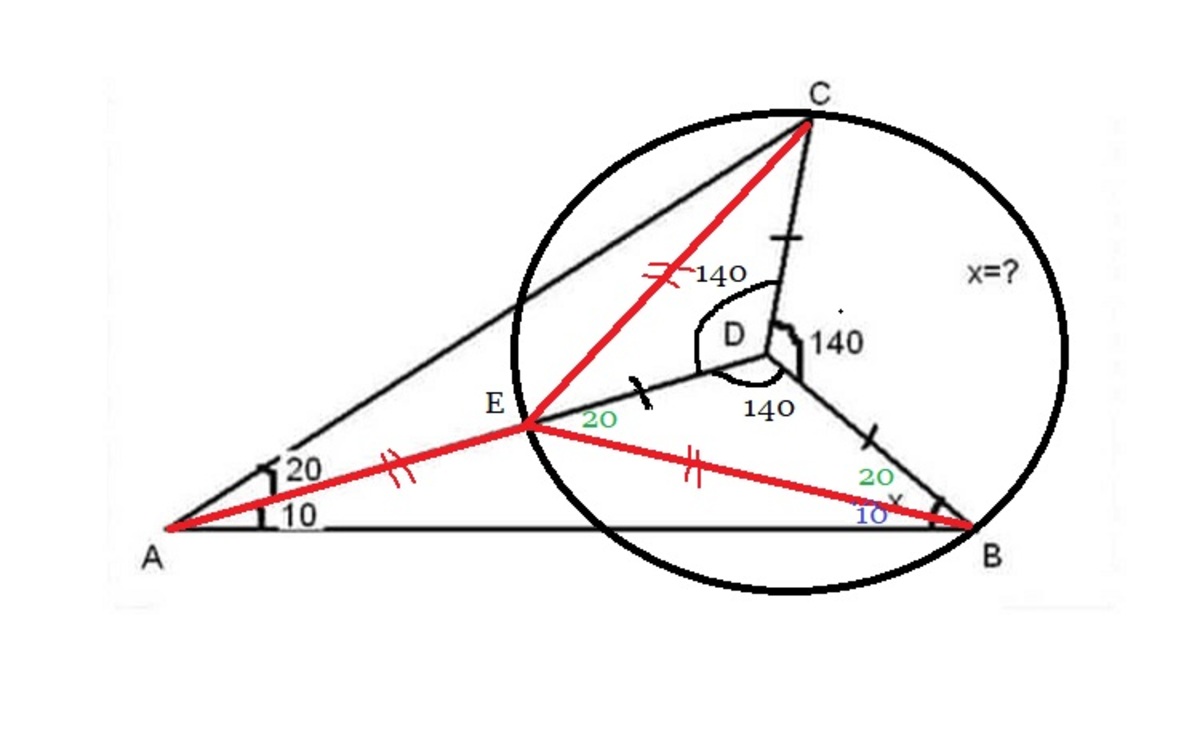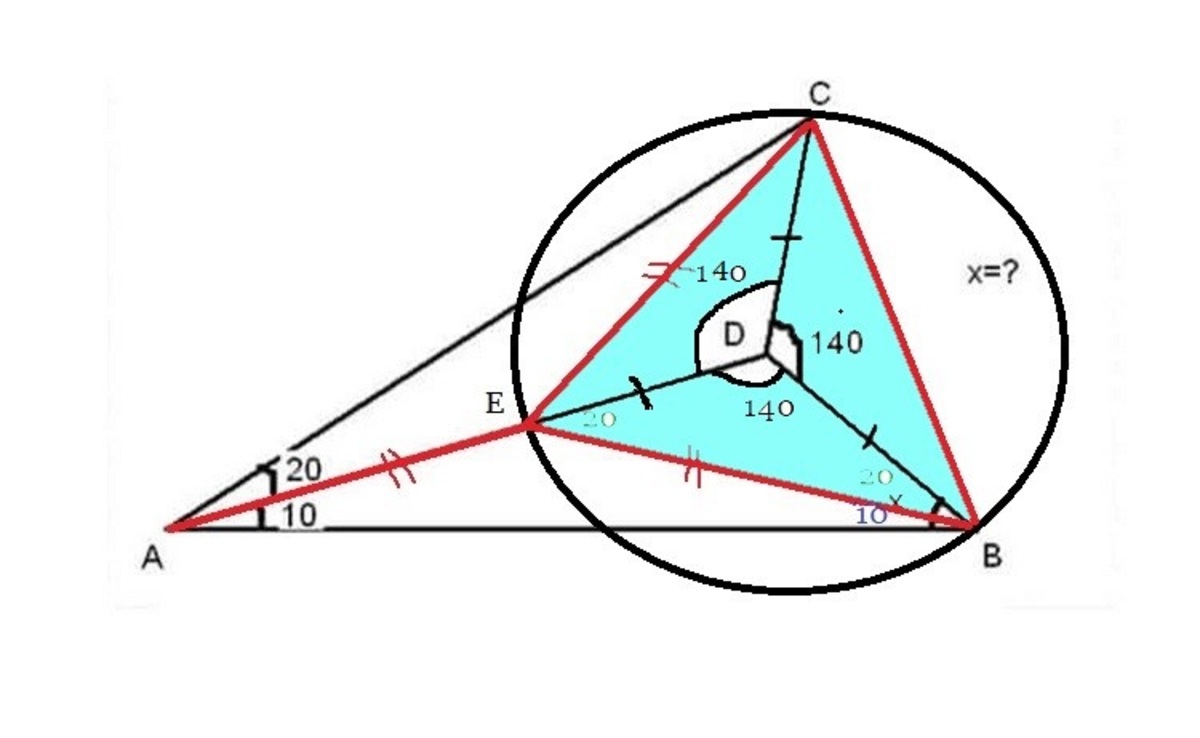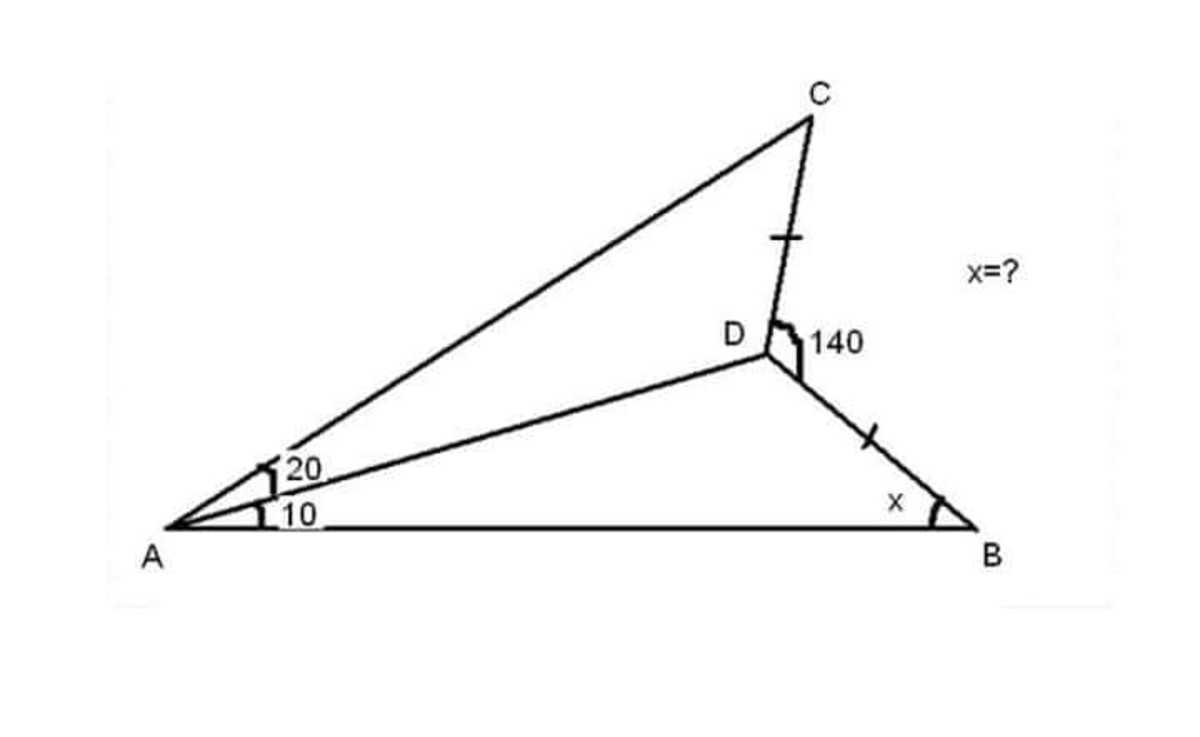This section requires Javascript.
You are seeing this because something didn't load right. We suggest you, (a) try
refreshing the page, (b) enabling javascript if it is disabled on your browser and,
finally, (c)
loading the
non-javascript version of this page
. We're sorry about the hassle.
2 solutions
 Take a point
E
on
A
D
such that
E
D
=
D
B
=
D
C
, thus
E
,
B
,
C
belong to a circle of center
D
.
Take a point
E
on
A
D
such that
E
D
=
D
B
=
D
C
, thus
E
,
B
,
C
belong to a circle of center
D
.
△ E D B is an isosceles triangle, thus the congruent angles each measures ∠ D B E = ∠ D E B = 2 0 ∘ .
Also, we have △ A C D , △ A D B are congruent triangles by S.A.S.
△ C D E , △ E D B are congruent triangles by S.A.S.
Thus, △ A E C , △ A E B are congruent by deduction.
Therefore: E A = E C = E B corresponding sides of congruent triangles.
∠ A E B = 1 6 0 ∘ ⟹ ∠ E A B = ∠ E B A = 1 0 ∘
Thus, x = 2 0 ∘ + 1 0 ∘ = 3 0 ∘
 Also, I forget to mention that the three blue triangles are congruent by S.S.S, which makes
the interior angles of this triangle
∠
E
D
C
=
∠
E
D
B
=
∠
C
D
B
=
1
4
0
∘
Also, I forget to mention that the three blue triangles are congruent by S.S.S, which makes
the interior angles of this triangle
∠
E
D
C
=
∠
E
D
B
=
∠
C
D
B
=
1
4
0
∘

∣ A D ∣ ∣ D C ∣ = sin ( 1 1 0 ° − x ) sin 2 0 ° , ∣ A D ∣ ∣ D B ∣ = sin x sin 1 0 ° . ∣ D C ∣ = ∣ D B ∣ ⟹ sin 2 0 ° sin x = sin 1 0 ° sin ( 1 1 0 ° − x ) ⟹ x = tan − 1 ( sin 2 0 ° + sin 1 0 ° cos 1 1 0 ° sin 1 0 ° sin 1 1 0 ° ) = 3 0 ° .